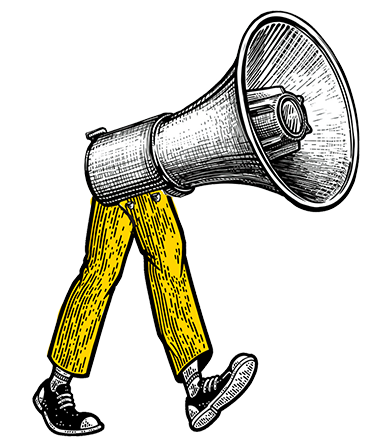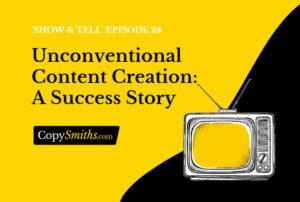Home » Blog » Blog Articles: The 25 Most Important Rules

Blog Articles: The 25 Most Important Rules
1 – Write well. Write to a theme. Write naturally. Write comprehensively. Write Often.
2 – Remember to write for the readers. The search engines will work out the rest.
3 – Write to a theme. Understand your article’s topic clearly and, a bit like what you did in school or university essays, keep referring back to the topic and making sure you cover it well. Answer the question 🙂
4 – Determine why you are writing and what tone to adopt.
- Is your aim to introduce a user to a product or service they might not have seen or used before? E.g. explaining its benefits and merits, and why it might be a better choice than others.
- Is it to help the reader solve a problem they are having?
- Is it to entertain? E.g. the reader is bored and filling in time.
- Is it to build authority? E.g. to promote a person, product or service as an expert in this space.
- Why are you writing about this? What is the purpose? What is the outcome you want to achieve from the reader? Don’t forget to ask them to take action. E.g. “If this works or helps you, please send us an email to let us know. We love getting feedback.”
5 – The first few headings in your article are REALLY important. A reader will often skim through the headings first before determining whether they will spend time in reading more. They will look for headings that make them feel that the article is going to help them.
6 – Have a strong opening section to get people reading, perhaps including a point form list of what’s in the article ahead. Have a good body section to keep them engaged and reading, and a concluding section that lets them walk away thinking they learnt something. Again don’t forget to ask them to do what you want. What action do you want them to take? Buy this. Share this. Tell us. Etc…
7 – Be engaging.
8 – Be entertaining.
9 – Be concise.
10 – Don’t write in big blocks of text.
11 – Break up your writing with meaningful headings and paragraphs.
12 – Your headings and all your elements on the page should reflect the theme of the website. Don’t forget about menu names, image names and ALT text and other metadata that give meaning to your non-text content. Would a blind person using a screen reader understand what a “thing” is conveying?
13 – Use tables and charts and lists, where you can, to help summarise your ideas in a different way. Give the reader a break from reading. Give them something they can skim read and still pick up information.
14 – Add images – entertaining or informative – to help break up the text, and make it easier to read and understand. E.g. Some people are visual learners so a diagram might work well.
15 – Add quotes from third parties to add credibility and authority to your ideas, so it’s more than just your opinion.
16 – Add links to other internal or external information if the reader wants to learn more than what you covered in your article
17 – Be comprehensive. Cover the topic well.
18 – Writing often is the real key. The more articles you write around a topic, the more sub- and micro-topics you will cover, and the more authority you will be perceived to have.
19 – Review your work. Run it through a spelling and grammar check. Does it make sense? Does it flow? Did you answer the article’s intent? Did you entertain and inform?
20 – If you found what you wrote interesting, others will too.
The above ideas are generic in nature in terms of writing articles for people and search engines. The below ideas are specific to SEO for eCommerce stores.
21 – Make sure all navigational and structural text is oriented toward your store’s theme.
- Home Page – Main overall store theme
- Category – Sub Theme covering that category
- Product – Specific item theme
22 – Write articles on each category/topic in each of these levels.
23 – People like to know they aren’t the only one buying a product. In the absence of product reviews you can write articles about why people are buying it, different ways of using it, what else can you add on to it to make it even better etc.
- “Top 10 items we sold in [this month] from [this category].” Write a paragraph on each of the ten products.
- “Our number one best seller in [this category] for [this month].” Write long form post on that one product.”
- The newest [x] items we have just received for [this category].”
- You want people to think “Hey, I didn’t know I needed this and wow this is cool. I don’t want to miss out by not having one of these in my life.”
24 – Your manufacturer’s code and any technical specifications should all be the same as supplied by the manufacturer as users will often search for these terms.
25 – Efforts should be made to use your own images and product descriptions where possible as every other site will be using the same manufacturer supplied images and descriptions. You need to stand out.
CopySmiths
I'm Katrina McKinnon, founder of CopySmiths and Small Revolution. In my 20 years of experience, I have helped online businesses create high-performing content specifically on an eCommerce store's blog. Find me on LinkedIn and Twitter.

CopySmiths offers the best blog writing services for online stores.
If you'd like us to write blog articles for you, click here.
Most Recent
- 3 Bold Questions You Should Ask When Hiring A Content Writer

- 5 Practical Reasons You Should Use a Blog Post Template

- 4 Amazing Benefits of Using a Title Generator for New eCommerce Blogs

- 10 Awesome Bio Examples Your Online Store Blog Should Emulate

- 8 Basic Steps to Successful Content Development Every Time

Podcasts
Got a question?
Ask our friendly team about our article writing services.
Subscribe to CopyZine
Monthly, hand-picked stories of the best in eCommerce Content.




